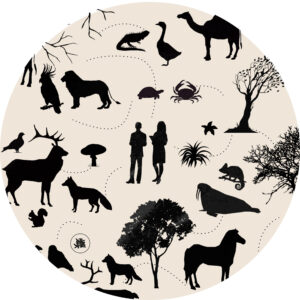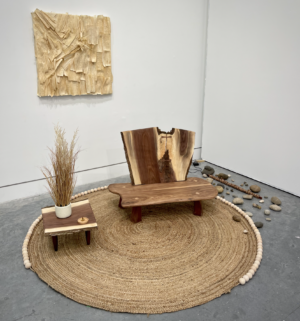Care Through Play, Anywhere
Jingyuan Li
Exploring Digital Play Therapy
Hi! Welcome to Jingyuan (Jeffrey) Li’s online thesis exhibit. My design-research project is around digital play therapy, a newer method of mental health intervention for children that’s conducted by play therapists online using digital tools.
This page won’t go in detail about the entire journey, so please feel free to reach out to me if you are interested, and my contact info is included at the bottom of this page. If you are not familiar with the terms used in this exhibit, you may refer to the glossary section below at anytime.
Abstract
Since the beginning of the COVID-19 pandemic, many services and businesses have been transitioned online to avoid travel and exposure. A number of these timely adaptations started as a compromise, but are now expected to continue even after the pandemic is over. Telehealth and teletherapy were among the most prominent examples—as doctors, therapists, and counselors moved to deliver their services remotely. In the last week of March 2020, telehealth encounters in the United States increased by 154% compared to 2019 (Koonin et al., 2020, p. 1598).
As counseling sessions were made available from home, many saw the benefits of teletherapy, including increased accessibility, timeliness, convenience, continuity of care, and patients’ comfort of being in their own space. However, unlike conversation therapies, play therapies for children rely on the act of physical play and equipment such as toys and a sand tray. As a result, play therapists have been challenged in adapting to the current model of video-based teletherapy. Based on information gathered from the primary research with counselors and play therapists, most challenges are related to the reduced therapeutic quality due to the lack of support from technology, despite the amount of interest to include more digital tools in their practice.
To explore ways to solve these challenges, the researcher analyzed the data from interview sessions with the therapists and generated a list of design principles. Following these established principles, an iterative approach was initiated and included brainstorming, system mapping, wireframing, and a series of digital prototypes. Multiple possibilities of digital play therapy were explored with active participation and feedback from the professionals.
Keywords: play therapy, teletherapy, mental health, digital transformation, therapist, health care for children
Glossary
Play Therapy
A sum of psychotherapeutic approaches developed to help children and teenagers overcome emotional and behavioural difficulties. It utilizes children’s natural instinct to play and encourages them to use play as an expressive and problem-solving process, as opposed to using only verbal communication. The most frequently used equipment for play therapy are sand trays, dollhouses, crayons, and mini figures, with which children can tell stories by creating scenarios (Eugster, 2013). There are mainly two modes of play: nondirective or directive. The former encourages children to play freely and solve a psychological puzzle on their own under supervision, while the latter is guided by a therapist in response to the children’s past experience (Tennessen & Strand, 1998, p. 112).
Tele-play
Virtual or remote forms of play therapy. Also known as tele-play therapy. Note that this is to be distinguished from “Teleplay” which is a term used in television programs.
Cognitive Behavioral Therapy (CBT)
Psychotherapy that combines cognitive therapy with behavior therapy by identifying faulty or maladaptive patterns of thinking, emotional response, or behavior and substituting them with desirable patterns of thinking, emotional response, or behavior. Cognitive behavioral therapy is used in the treatment of various mental and emotional disorders including depression, anxiety, anorexia, and substance abuse (“Cognitive Behavioral Therapy,” n.d.).
Research







Prototypes
Virtual Play Room (VPR)
The prototype consists of a simple meeting management portal for the therapist and a 3D-simulated play therapy environment that resembles its equivalence in the real life.
Through this prototype, Jingyuan proposed possibilities to customize virtual meeting places that are flexible and reflective of the children client’s nature to improve the online therapy experience.





Video Documentations
Therapy Avatar AR (TAAR)
Also inspired by real-life play therapy methods, puppet play or drama therapy, TAAR is a mobile application built for clients to create customizable avatars for themselves and use them as AR filters during video meetings with the play therapists. These avatars are digital representations of themselves that can change throughout time responding to the emotion at the moment.
The purposed prototype is aimed to enhance the experience of video meetings used commonly by virtual therapies and allow clients to express their inner self with therapists in a timely manner. The therapist can also find therapeutic value in the discussion with their clients about their avatar choices.






